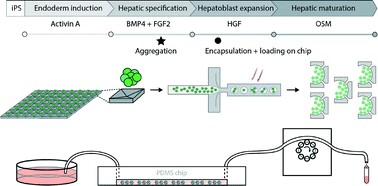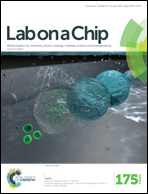Engineering a perfusable 3D human liver platform from iPS cells†
Abstract
In vitro models of human tissue are crucial to our ability to study human disease as well as develop safe and effective drug therapies. Models of single organs in static and microfluidic culture have been established and shown utility for modeling some aspects of health and disease; however, these systems lack multi-organ interactions that are critical to some aspects of drug metabolism and toxicity. Thus, as part of a consortium of researchers, we have developed a liver chip that meets the following criteria: (1) employs human iPS cells from a patient of interest, (2) cultures cells in perfusable 3D organoids, and (3) is robust to variations in perfusion rate so as to be compatible in series with other specialized tissue chips (e.g. heart, lung). In order to achieve this, we describe methods to form hepatocyte aggregates from primary and iPS-derived cells, alone and in co-culture with support cells. This necessitated a novel culture protocol for the interrupted differentiation of iPS cells that permits their removal from a plated surface and aggregation while maintaining phenotypic hepatic functions. In order to incorporate these 3D aggregates in a perfusable platform, we next encapsulated the cells in a PEG hydrogel to prevent aggregation and overgrowth once on chip. We adapted a C-trap chip architecture from the literature that enabled robust loading with encapsulated organoids and culture over a range of flow rates. Finally, we characterize the liver functions of this iHep organoid chip under perfusion and demonstrate a lifetime of at least 28 days. We envision that such this strategy can be generalized to other microfluidic tissue models and provides an opportunity to query patient-specific liver responses in vitro.

- This article is part of the themed collection: Lab on a Chip Pioneers of Miniaturization Lectureship winners

 Please wait while we load your content...
Please wait while we load your content...